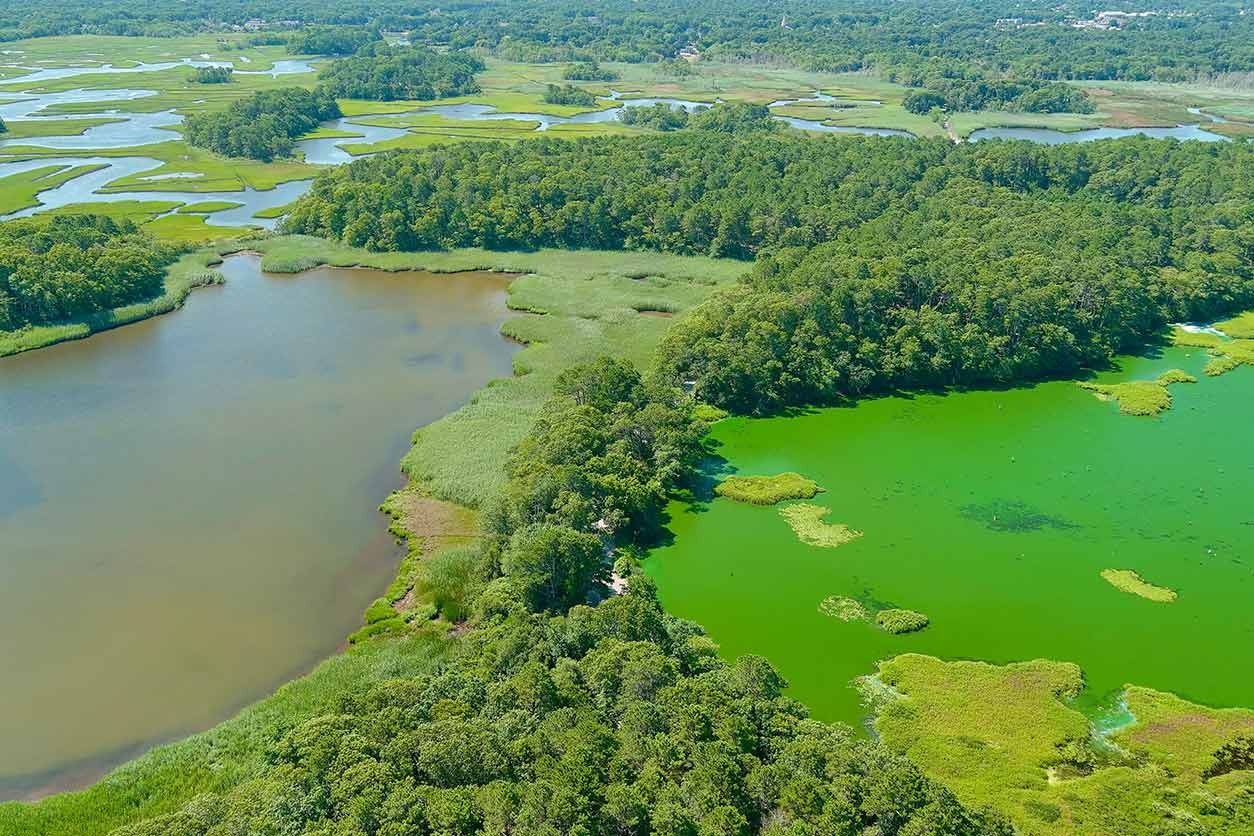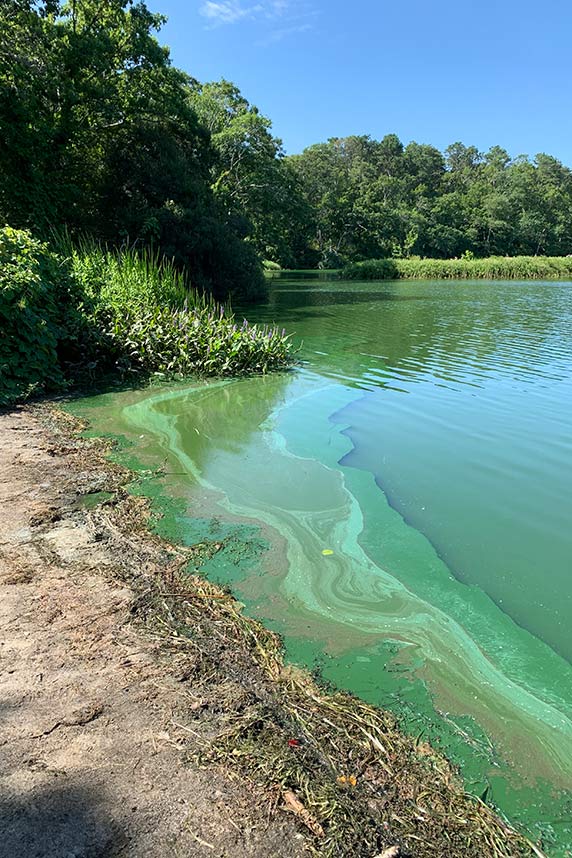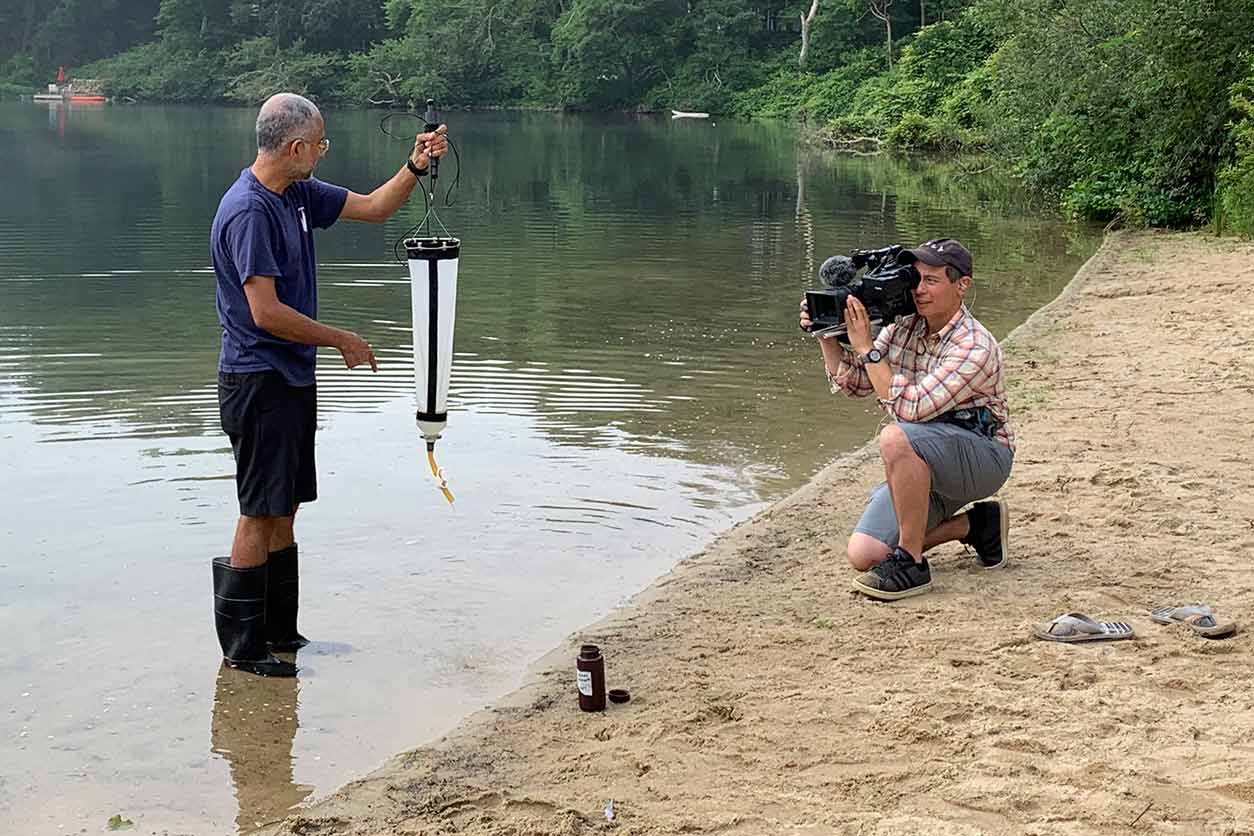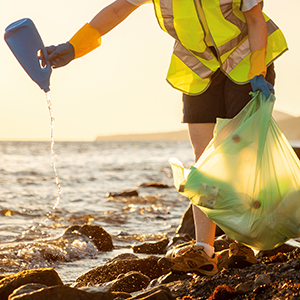Harmful algal blooms (HABs) are occurring more frequently and are most common during the summer and early fall months when the water is warmer, according to the U.S. Centers for Disease Control and Prevention. A new film series, “Saving Our Ponds,” educates Cape Cod residents and tourists about what causes blooms in the area and precautions they can take to keep themselves and their pets safe.
Developed by the Woods Hole Center for Oceans and Human Health (WHCOHH) with NIEHS support, the series includes six two- to four-minute videos that showcase efforts to prevent HABs in the water bodies of Cape Cod. The 339-square-mile peninsula juts into the Atlantic Ocean and contains numerous ponds and waterways that are home to abundant wildlife and are used for recreational activities, like swimming, boating, and kayaking.

“We hope to inspire and motivate viewers to actively engage in local conservation efforts, provide information about ways they can get involved, and help foster a sense of responsibility and ownership for our ponds,” said Mindy Richlen, Ph.D., director of the WHCOHH’s Community Engagement Core and co-producer of the films.
The series shares information that applies widely, said Anika Dzierlenga, Ph.D., program director for the NIEHS and National Science Foundation Oceans & Human Health Program.
“For those who do not reside on Cape Cod and become aware of freshwater harmful algal blooms through this film series, I hope they feel empowered from these stories to contribute to a positive change in their own communities,” she said.
Recognizing danger

HABs appear when the nutrients nitrogen and phosphorus accumulate in fresh or marine water bodies and create an imbalance in the ecosystem, explains Emily Reddington, executive director of the Great Pond Foundation.
The imbalance, coupled with warmer temperatures, can cause a type of bacteria called cyanobacteria to multiply rapidly into blooms that resemble green paint floating in the water. In the films, experts emphasize the importance of leaving a bloom site immediately and to avoid swimming, drinking, or eating anything that came from the water.
Bloom toxin exposure causes a wide range of symptoms in humans, from a mild skin rash to serious illness, according to the U.S. Environmental Protection Agency. In pets, toxins can cause seizures, gastrointestinal illness, and even death if not treated quickly. Pet and livestock owners should contact a veterinarian immediately if they believe an animal has been exposed.
Keeping waterways clean
The series also documents projects aiming to prevent HABs through new technologies and cleanups. In one video, scientists from the Massachusetts Alternative Septic System Test Center discuss systems to remove nitrogen from wastewater and keep it out of water bodies where it can contribute to toxic blooms.
In another video, founders of The Green Center explain how eco-toilets can be used to divert nitrogen in urine so that it can be used to fertilize plants rather than enter septic and water systems.
“The film series Dr. Richlen put together serves as a powerful advocate for the stewardship of Cape Cod, highlighting the region's unique natural beauty and ecological significance,” said Cape Cod resident Neel Aluru, Ph.D., an associate scientist at the Woods Hole Oceanographic Institution and Falmouth Water Stewards volunteer.

Additional videos are in development for the series, which will explore cyanobacteria issues and monitoring programs on Martha’s Vineyard, as well as landscaping approaches to preserve and improve water quality. For more information, please visit https://cyano.whoi.edu.
(Lindsay Key is a contract writer for the NIEHS Office of Communications and Public Liaison.)





